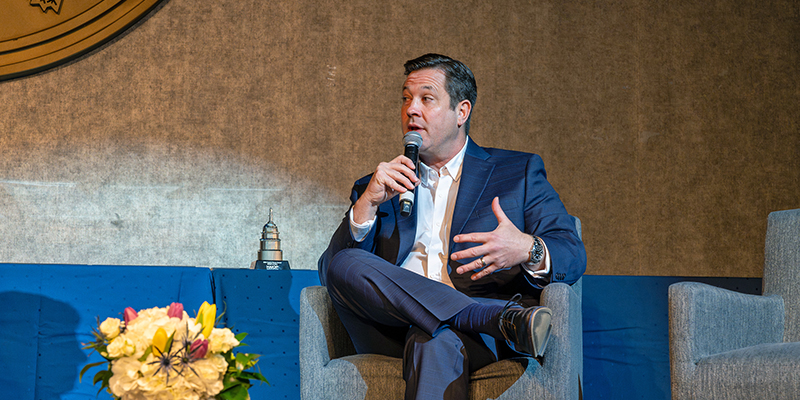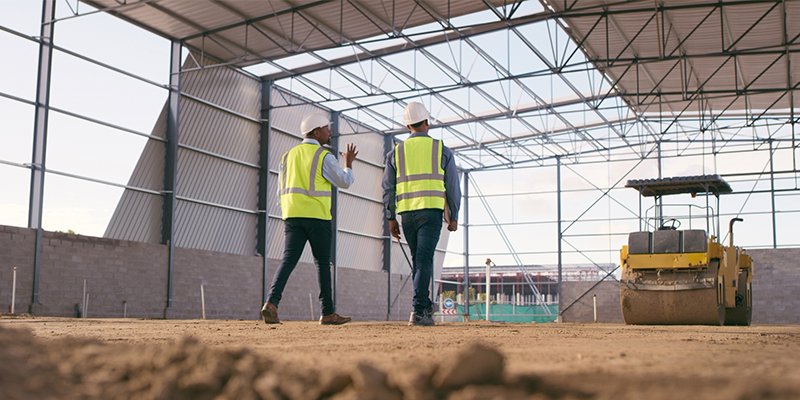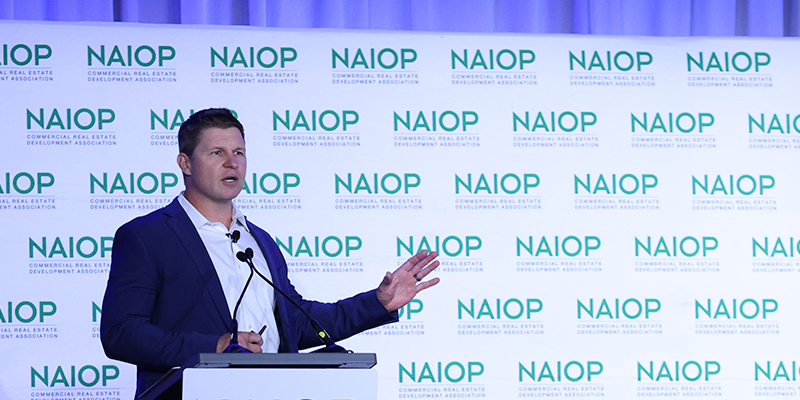NAIOP’s Market Share blog sat down with 2024 NAIOP Chair Brian Walker to ask him about his career path, NAIOP experience, and vision for the association this year.
You are the first NAIOP Developing Leader to be named chair. Tell us about that.
I can recall what it felt like to be a young CPA just starting my career. NAIOP and the Pittsburgh chapter were essential in connecting me with the knowledge, research, education and people I needed to launch my career. Our DLs comprise nearly 28% of our total membership, and they’re the future of our industry and association. I’m thrilled to have the opportunity to meet so many of our rising leaders this year and support their growth.
Your career has been largely in the western Pennsylvania market. How has the market changed?
Pittsburgh has transformed from its roots as “the Steel City” into a vibrant hub for healthcare, education, technology, robotics, and financial services. Western Pennsylvania has been a strong annuity market for investment. Our real estate has always been built and priced right, with growth slow and steady. The offset is that the market is not growing rapidly, and we see lateral movement from old buildings to new.
What do you see as the biggest NAIOP benefit?
This is a question each one of us could probably answer differently. To me, it’s the knowledge we can gain through NAIOP’s research and events, and the incredible opportunity to get to know like-minded people – both within my chapter and from across North America – who are my future business partners.
Why do you find the commercial real estate industry engaging?
I love dealmaking. Developing and building transformational real estate assets that people say will be impossible is a challenge I’m not afraid to face. It helps me to think “outside the box” to find the solutions to make deals happen. I’ve spent nearly the past two decades revitalizing downtowns and am proud of that work.
What challenges are on the horizon?
CRE is experiencing some headwinds, particularly in office space demand with an estimated $1 trillion of debt maturing this year. Our legislative team is at the forefront, helping to develop related legislation that could propel the repositioning of offices to multifamily, and many of our chapters are involved in similar initiatives on the state, provincial and local levels.
How long will the industrial surge continue, and what is the next sector poised for growth?
Industrial demand seems to be normalizing post-pandemic as absorption moves closer to pre-pandemic levels. What remains uncertain is the impact the capital markets will have on the existing portfolios, as well as new construction. Will activity remain limited as owners hold tight, unwilling to sell their assets with prices and cap rates desired by current buyers due to the higher interest rates? If the interest rate reductions come to fruition as expected, then we will most likely see an increased activity in the latter part of 2024. A friend and colleague that I deeply respect recently reminded me that “the unanswered question is whether new tenants will pay the higher asking lease rates proposed by existing landlords for larger spaces or as contemplated for new spec construction.”
Why should our members be engaged legislatively?
Legislative issues vary by market and there may be topics that are more important in some markets than others. Our legislative team is ready to help bridge those gaps and represent the needs of all our members. Regardless of how one feels about politics, laws and regulations are major factors in our industry. The more united we stand as an association, the more effective we will be across the country, and even into Canada where our legislative activity is increasing.
Federally, NAIOP is extremely active and the list of work happening at any given time is extensive. Currently our team is helping create legislation that establishes tax credits for adaptive reuse projects, which is expected to be introduced in the House of Representatives shortly. Working on protections for CRE owners in our ongoing credit crisis and holding the line on capital gains tax increases are ongoing priorities, as well as proper tax treatment of carried interest and last year’s successes related to the Waters of the United States.
How will the 2024-2027 Strategic Plan guide the association?
It’s the roadmap to the future and sets the priorities for the association, allowing us to focus our energy and resources to ensure we are working toward common goals that advance our industry and association. This plan was based on member input through surveys, focus groups, and lots of conversations that helped identify core values, member needs, and goals. This plan is truly forward-looking and will inspire the organization to operate with inclusivity, transparency, integrity, innovation and collaboration.








